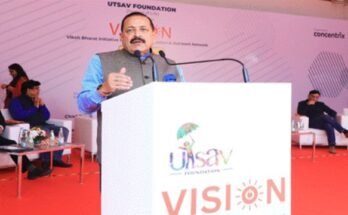Contrary to the fears of US President Donald Trump, climate protection efforts needn’t eat jobs after all. The International Labour Organization (ILO), in its annual flagship report on the global job market, has noted that achieving the Paris Agreement’s 2 degrees Celsius goal will result in a net increase of 18 million jobs across the globe by 2030. The “World Employment And Social Outlook 2018—Greening With Jobs” report also notes that more than 300,000 workers will be employed in the solar and wind energy sectors to meet the Narendra Modi government’s ambitious goal of generating 175 gigawatts (GW) of electricity from renewable resources by 2022. However, fulfilling this optimistic target will require establishing green skills training programmes.
India ranks amongst the top 10 countries for production of renewable energy through solar, wind and biomass. Sadly, the existing skill mismatch could not only pose hurdles to further growth here but also leave the poor out of the greening of the economy. Closing this green skill gap is an imperative for establishing sound environmental sustainability programmes.
The initial step is identifying the necessary skills. The transition to green jobs can take place along two tracks. The first is a decline in the number of jobs in various industries, such as those reliant on carbon-based production. Secondly, changes in skill sets can equip workers to continue working in sectors like agriculture and infrastructure as they grow greener. Managing the socioeconomic disruption in the former instance and matching industry demand in the latter demands good quantitative and qualitative employment data. For instance, South Africa regularly publishes a list of occupations that are in high demand, including those in the green sector. France has a dedicated National Observatory of Jobs and Skills in the Green Economy, which regularly assesses employment trends in the green economy. In India, however, the recent spirited debates on job creation have underlined the lack of reliable, timely employment data.
Next comes the integration of green skills in formal education and training programmes. Thailand provides a good example: It is emerging as a model for green building by developing occupation-specific (construction in this case) sets of green skills competencies. Technical and Vocational Education and Training (TVET) programmes run by the government in India are another matter entirely.
Government-regulated TVET programmes fail to align their curriculum with industry needs, thereby depriving graduates of decent jobs. This is a long-standing problem and is bound to be particularly harmful when it comes to green jobs, given their rapidly evolving demands.
This government failure shouldn’t be surprising. As many as 17 ministries are engaged in education, vocational and technical training, and skill development. The resultant jumble means that TVET programmes often become a paint-by-numbers exercise focused on meeting overblown enrolment targets, churning out job seekers with questionable skills. For an example, look no further than Narendra Modi’s Skill India mission, launched in 2015. It has run out of steam, with problems ranging from poor management to a shortage of qualified trainers. The Union ministry of environment, forest and climate change recently launched a Green Skill Development Programme (GSDP) which aims to train over 550,000 people in the environment and forest sectors in the next three years. If it means to succeed, it must learn the lessons of such failures.
One of those lessons is the importance of partnering with the private sector—whether in designing government programmes or enabling and incentivizing companies to run such programmes. Prospective employers are the ones who are most well acquainted with changing skill needs and labour market shifts, after all. Previous skill initiatives have often run aground here, with a lack of apprenticeship training and an inadequate industry interface. Thailand, again, shows how this can be done; private companies play an important role in providing on-the-job training for green transition. And when large businesses undertake such initiatives, this triggers a more widespread demand for green skills and training across smaller businesses and the informal sector embedded in the former’s value chains.
Total renewable power capacity installed in India, as of February 2018, was 65 GW, against the target of 175 GW by 2022. If the government truly wants to accomplish this audacious goal, it will need to focus on much more than green energy infrastructure.
Note: News shared for public awareness with reference from the information provided at online news portals.



